"Damned Dardanelles!" They will be our grave. ” Defeat of the allied army
The operation began on 6 August. A diversionary attack began in the area of Achi-Baba. The British troops with great difficulty took the enemy's advanced trenches, but then collided with significant Turkish forces. At this time, two Turkish divisions received orders to attack the enemy. A stubborn oncoming battle ensued. As a result, neither side achieved decisive success. 7 August, the British command sent reinforcements and repeated the attack. This attack also failed. Violent fights went on for five more days, the British did not achieve victory, suffering huge losses.
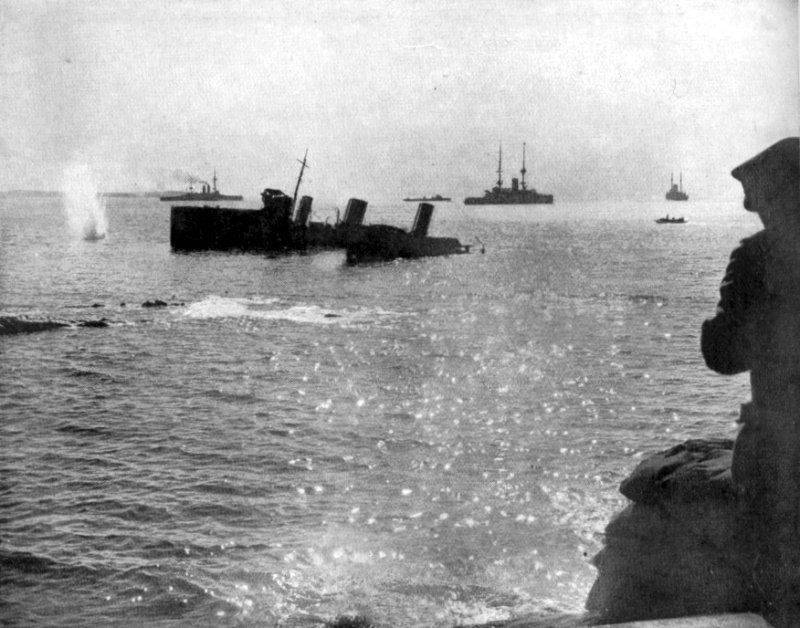
ANZAC. The Australian and New Zealand Army Corps was able to hide reinforcements - the 13 Infantry Division and the 29 Indian Brigade. The units landed secretly, at night, and even horses were kept in underground shelters. On the night of 6 on 7 August, the Australian-New Zealand troops deployed in front of the Turkish positions, which were defended by small forces, and headed towards the Mustafa-Kemal Pasha's 19 Turkish division.
The offensive developed slowly, although initially the resistance of the enemy was small. The advanced parts of the Turks retreated. The terrain was wild, difficult to pass, covered with ravines and rocks. It was hot over 45 °, which soon led the soldiers to exhaustion, as there was practically no water here. The available small reserves of water quickly ran out. The wounded died and the healthy were exhausted. In the meantime, the Turks sent reinforcements and the resistance increased significantly. Allies covered with artillery fire. In the shelling, Turkish ships were also taken from under Nagara, shelling the area occupied by the Australian corps and Gaba-Tepe. As a result, the offensive almost stopped.
True, 8 August allies achieved success at sea. The British submarine E-11, under the command of Captain Nasmyth, sank the old squadron battleship of German construction Hayretdin Barbarossa "(former German" Elector Friedrich Wilhelm "). “The Allied offensive assumed such a dangerous character that the Turks had to take the risk of sending reinforcements by sea. E-11 was lucky, she met a battleship near Bulair, accompanied by the destroyer Basra. “Barbaros Hayreddin” tried to deliver a large batch of ammunition to the front. Nasmith evaded the destroyer and reached the starting point of torpedoes on the right side of the battleship. Torpedo hit the target. The Khayreddin received a strong lurch on the starboard side and headed towards the coast to try to run aground. But all the efforts of the Turks were in vain. After 20 minutes the battleship started up from a terrible explosion - it detonated the ammunition. The ship rolled over and sank. From 700, the crew man survived no more than a third part. Nesmith attempted to torpedo a destroyer who rescued the battleship's crew, but missed ”(Patients A.“ On the ocean expanses ”).
Another British submarine E-14 this morning also did not remain without prey. The submarine met the large Turkish transport Mahmut Shevket Pasha with a displacement of about 5000 tons. The British fired at the ship from a cannon, and the transport rushed ashore to escape. Captain Boyle called for help E-11, which had a larger gun. Both boats shot the aground while transporting them exploded.
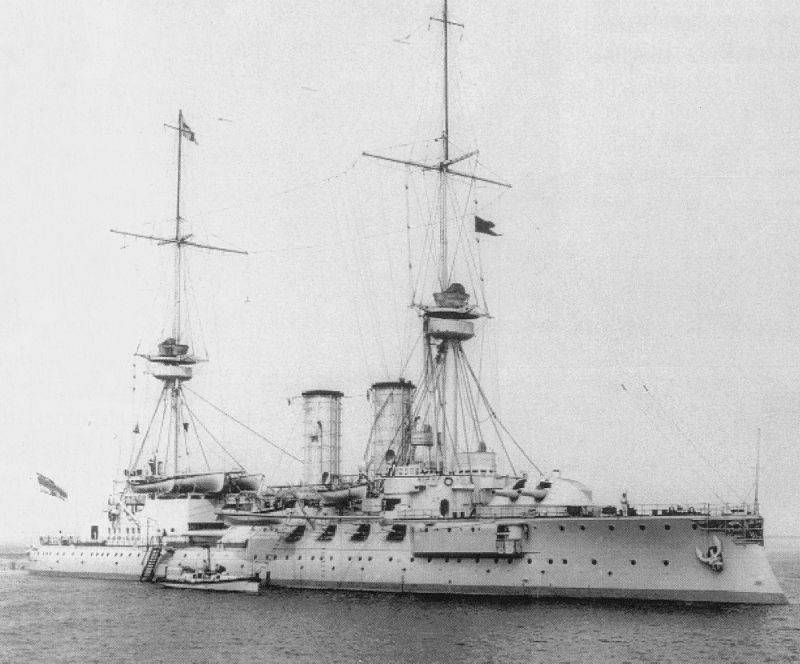
Battleship "Hayretdin Barbarossa"
8 August Australians have achieved maximum success. Reaching the top of Kodia-Shimendag, the soldiers saw the Dardanelles, Maidos, Nagara and the Asian shore. However, it was not possible to connect with the columns that landed at Suvla. Confusion reigned in the Turkish camp. The Turks believed that in these battles the fate of the straits and Constantinople was decided, and if they failed, Constantinople would be quickly lost, therefore they did not spare the strength and resources to support their forces operating on the peninsula. The German-Turkish command took extraordinary measures and soon stabilized the front. The 8, 9, 4, 5, and 12 Turkish divisions were redeployed to Sari-Bair. All that could be pulled from Gallipoli, Aci-Baba and from the Asian coast, was sent to the area. Pulling off the troops, the Turks launched a counteroffensive. The allies could not stand it and began to depart. At first, the Indian brigade could not resist, then parts of the 13 division. On the night of August 9, the Chunuk-Bair Plateau was lost.
On the morning of August 9, the Turkish forces continued the counteroffensive. The Allied forces, suffering from intense heat and lack of water, continued to roll back under the repeated attacks of the Turkish army. Gradually, the British lost all the heights and hollows that they had previously captured. By the evening of August 9, the Allies were pushed aside at the foot of Sari-Bair, almost to the starting position. Only extreme fatigue and artillery fire of the Allies delayed the further development of the offensive of the Turkish army.
10 August allies tried again to go on a decisive offensive, collecting and throwing into battle all the remaining reserves. After the 2-hour artillery preparation allies rushed to the attack. However, the Turks repelled this attack. After this, the front gradually stabilized. As a result, the Allies advanced only 400-1200 meters deep into enemy territory. It was a failure of the operation, for which he had to pay an expensive price.
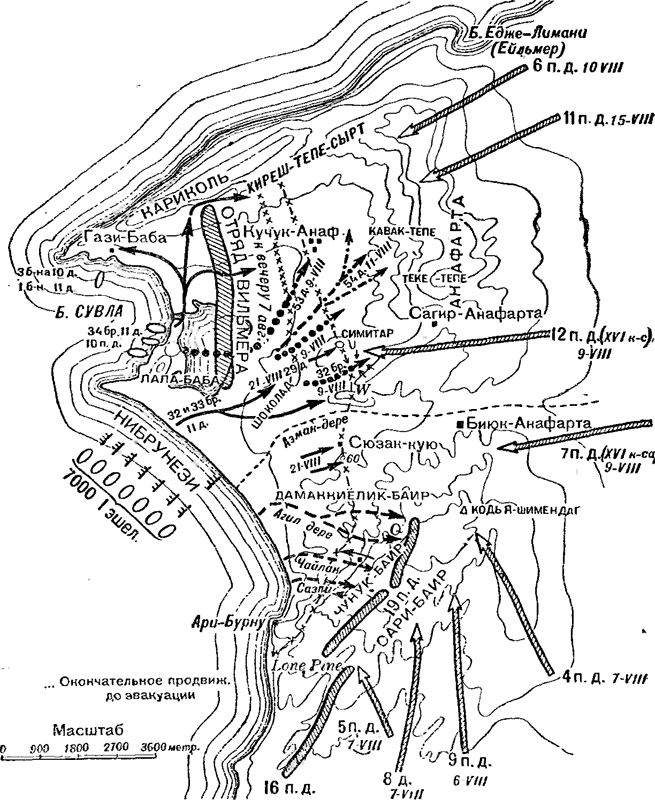
The landing of the Allied landing force. Fights from 6 to 21 in August 1915
Landing in the gulf of Suvla. The landing began successfully. In the first echelon landed 10 thousand soldiers. In 1 hour. 30 min. 6 August nights The 32-th and 33-th brigades of the 11-division were on the banks of the Nybrunesi. Both brigades deployed to attack the hills of Shokolat and W. These hills dominated the bay of Suvla.
The landing of the following brigades of the 10 and 11 infantry divisions was planned north of the Salt Lake arm, but in the dark the fighters made a mistake and sent the lighters to the south. Along the coast, the lighters were stranded and the soldiers walked to the shore to the waist in the water and under enemy fire. Turkish troops occupied the heights of Gazi-Baba, No. 10 and Lala-Baba. Only by morning the 34 Brigade of the 11 Infantry Division was landed, as it took a lot of time to lift the lighters and arrange the landing with the boats. By morning, the British captured the heights: Lala Baba, No. 10 and Carikol. The first 5 battalions of the 10 division were decided to land at Nibrunezi, and the rest of the 3 battalion of the 10 division and one late 11 infantry battalion who arrived later - from Gazi-Bab.
In the first two days, the resistance of the Turkish troops was negligible. Willmer's squad, numbering only 24 1 people after the 500-hour battle, was unable to detain the enemy until reinforcements arrived. However, although the Turkish reinforcements in this area were delayed, the British also trampled on the spot and did not unite with ANZAC. The 7 and 8 of August were not used by the troops of the 9 of the British Corps for the development of the offensive. The commanders of the 10 and 11 infantry divisions, despite the demands of the Stopford commander to attack, reported that the troops were upset due to fatigue and lack of water, and there was not enough artillery to prepare for the attack.
Hamilton, sensing something was wrong, went to Stopford, commander of the 9 corps. Here he was convinced that the troops on August 8 had not advanced in any way, although at the same time ANZAC units attacked the Chunuk-Bair ridge and partially occupied it at the cost of heavy losses. Stopford said that he was going to launch an offensive only on August 9 and in the direction of Kuchuk-Anaphart, instead of contacting the left flank of the Australian corps. Hamilton gave the order to attack and ordered the landing in the bay of Suvla reinforcement in the form of the 53-th division of General Lindley.
As a result, the British missed a favorable time for the offensive. Commander 5 of the Turkish army Sanders, not daring to further weaken the Cape Helles area and the Asian coast, ordered the commander of the 16 corps, Feyzi-Pasha, to transfer from Bulair Isthmus to Biyuk-Anafarta (Bolshaya Anafarta). The Bulair Isthmus now had to defend the 1 Army. However, the commander of the 16 corps was in no hurry to carry out the order, the corps remained in place. Sanders, dissatisfied with the actions of the corps commander Feyzi-pasha, replaced him with a decisive Mustafa-Kemal, ordering him to attack the enemy before the British were finally prepared for the offensive.
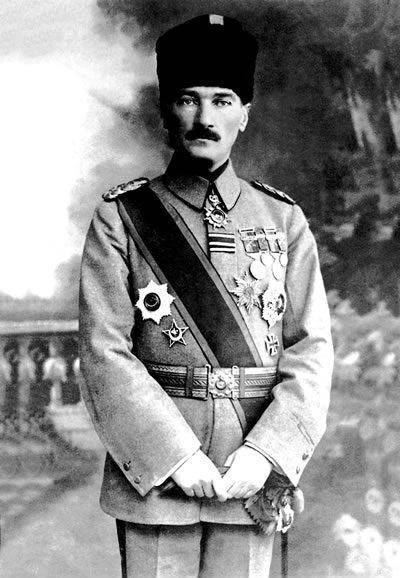
Hero of the Turkish Defense Mustafa Kemal
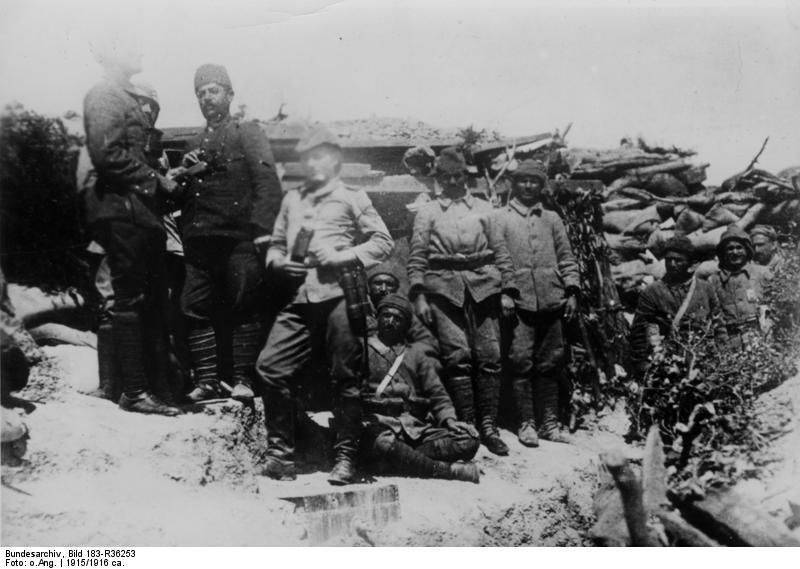
Thus, the British commanders missed the opportunity to break through enemy defenses, until Turkish reinforcements came up and supported the ANZAC offensive. “8 August,” Hamilton told the government, “Stopford hurried his divisional commanders, otherwise all the advantages of an unexpected disembarkation would be useless, but the divisional commanders believed (!) That they were unable to move. They said that their people were worn out by the difficulties that had been suffered on the night of 6 on 7 of August and the battle of 7 of August. To this was added a shortage of water. Finally, there were only three batteries, two of which are mountain batteries. Stopford argued that in the absence of sufficient support for land artillery, it was possible to count on the assistance of ship artillery, but the objections of the divisional commanders were stronger than orders from the corps commander. ”
Only in 4 hours of 9 August, the 32-I brigade began to climb the heights of Sagir-Anafart. The Turks have already pulled up reinforcements and defeated the brigade. When in 6 hour. other parts of the 11 Infantry Division turned to attack, the Turks threw them back with huge losses. The 53 Territorial Division, which landed at night on August 9, was thrown to the aid of the 11 Infantry Division in the direction of Kuchuk-Anafart. But the British troops were stopped by the counter-attack of the 12 of the Turkish division of the arriving 16 corps. 9-th corps by this time already lost 8 thousand people.
The Turkish command deployed the 12 and 7 infantry divisions of the 16 corps, and with the support of the 4 division, attacked the left flank of the Australian corps, which never received the help of the 9 British corps. Commander ANZAC Birdwood organized a separate Baldwin group (5 battalions). Mustafa Kemal with a bayonet attack knocked over Baldwin's group, which did not even have time to turn around. Australians have lost 3,5 thousand people and retreated in disarray. ANZAC, together with the attached parts, was finally defeated, having lost more than half of the composition - 20 thousand people.
11 August The 54 territorial division, at the beginning of the operation attached to the Australian corps, was transferred to the 9 corps. On August 12, this division attacked Kawak-Tepe and Teke-Tepe - two heights dominating the Anafarta ridge. The British advanced somewhat and took Kucuk-Anafart. In these battles for the height of No. 60, the battalion of the Norfolk Regiment mysteriously completely, to a single man, disappeared.
Hamilton removed Stopford from command of the 9 Corps. The corps was headed by the commander of the 29 Infantry Division, Lil. He developed a new plan of attack on the Anafarta elevations in the strip between Azmak-dere and Kiresh-Tepe with the main blow in the direction of the Simitar on the hill. Success ensured the bay of Suvla from enemy artillery fire, gave the starting position for the attack of the heights of Sagir-Anafart. However, the British have already missed time. The German-Turkish command was able to deploy 8 infantry divisions from Ari-Born to Kiresh-Tepe (4-I, 5-I, 6-I, 7-I, 8-I, 9-I, 11-I and 12-I) which, with the former two divisions of Ari Bourne (16-I and 19-I) made up the 10 divisions.
Hamilton reinforced the 9 Corps 2 Infantry Division, formed from the ANZAC Cavalry Division, and also transferred the 29 and 42 Infantry Divisions to the Suvly area. Together with the 53 Division, 21 August these troops launched an offensive prepared by Lil. The British suffered great losses in these battles. The 29 Division, which lost the whole brigade, suffered most. This day was worth only 29-th division 5 thousand people. However, the British were able to take the heights of the Simitar. The left flank of the ANZAC also launched an offensive and took the heights of 60 No. and Süzac-Kui. As a result, ANZAC established contact with the 9 case, but it was weak. After that, the Allies ran out of steam, they suffered such high losses that they could no longer advance.
Private-value battles still continued, but on the whole the battle was over. This was one of the bloodiest battles in the English military stories. The British lost 45 thousand people and were defeated. The Turks lost almost as much. The Turkish army won a victory, but incomplete, because it could not throw allies into the sea. To restrain the onslaught of the enemy, the 5 Army of Sanders was strengthened to 14 divisions, which reinforced the 4 division of the 1 Army, which occupied the Bulair Isthmus.
Thus, this battle decided the outcome of the entire Dardanelles epic. As in previous battles, the main role in the defeat of the Allies was played by mistakes in the organization of the operation. The Allies organized the landing of the troops well, it went almost without mistakes. But on land, the Allies made a series of blunders. The commander of 9 Corps, Stopford, began regrouping the troops and lost precious time, while in the Suvla region the Turks had only a weak cover. The troops of the 9 Corps did not support the ANZAC offensive and did not establish contact with the left flank of the Australian Corps. As a result, while the ANZAC fought hard and at the beginning of the offensive achieved great success, the 9 corps was inactive. This allowed the German-Turkish command to respond and succeed. In addition, the problems with the supply, again appeared, in particular, the soldiers were weary from thirst.
Evacuation. Results
The war again moved to positional. The Allies received more reinforcements, but they were only enough to hold their positions. The allies did not have the strength to attack, the Turks also did not hurry to go on the attack, so as not to incur unnecessary losses. The spirit of the allied and Turkish forces was weakened by sitting in the trenches. However, it was clear that the Anglo-French troops pressed to the sea would fight desperately, so the Ottomans were in no hurry. Time had to be an ally of the Turks.
In addition, the Turkish army was experiencing major problems with ammunition. So, in the middle of September 1915, the Turkish 5 army almost exhausted all the artillery ammunition, the arsenals of Constantinople were also almost empty. “Serbia and Romania did not allow the delivery of military equipment from Germany to Turkey,” noted the well-known military theorist, General A.A. Svechin. “The Turkish artillery in Gallipoli almost did not have any shells at all and sometimes only fired to cheer on their infantry, which stubbornly defended their trenches under the leadership of the German officers.”
However, the positional impasse was resolved in favor of the Turkish army. Italy, exhausted by the struggle with the Austrians on the Isonzo, could not support the operation. Greece still remained neutral. Bulgaria, which at first maintained a “wise neutrality” and bargained with the Entente and the Central Powers, began to lean toward the transition to the German camp. In September 1915, Sofia began mobilization. October 14 Bulgaria 1915 declared war on Serbia and by December the attacks of the Austro-German and Bulgarian divisions the Serbian army was defeated. Serbia has fallen. These events made the position of the Dardanelles army hopeless, it had to be evacuated.
Meanwhile, the position of the expeditionary army was deteriorating. Germany sent 13 submarines to the Aegean Sea, which in the first three weeks of September sank five near Crete, and from September 28 to October 11 18 steamers. The loss of these vessels, carrying military equipment, greatly worsened the position of the army in Gallipoli. In the future, the activities of the German submarines increased. After the occupation of Serbia, the activity of Turkish artillery on Gallipoli increased many times. Ground troops began to suffer heavy losses. In addition, winter has added new problems. So, at the end of November, there was a "big blizzard" - as a result of a sharp cold snap to 10% of the soldiers of the expeditionary army received frostbite. There was no warm clothing, and they could not equip the whole army.
In October, Field Marshal Kitchener asked the commander of the Allied forces in Hamilton Gallipoli about possible evacuation losses. He replied: 50% and all artillery. The general added that if he decided to evacuate Gallipoli, he, Hamilton, was asking for his dismissal. October 15 Hamilton was replaced by General Monroe. The new commander of the Allied Expeditionary Corps, General Monroe, raised the question of evacuation before the British Military Council. Kitchener, after visiting the expeditionary forces, supported this decision.
Some commanders were against it. Thus, the ANZAK commander Birdwood considered the evacuation undesirable, since, in his opinion, it would be associated with heavy losses, and the chief of the headquarters of the naval forces of the Dardanelles region Keyes developed a new breakthrough plan fleet through the Dardanelles. Admiral Vemmis, replacing Robek, supported the idea of a new fleet attack. As a result, only on December 6, a conference of representatives of all the allied powers in the French main apartment decided to evacuate the troops.
The evacuation plan of the Dardanelles army was developed in deep secrecy. The blow of the Turkish troops during the evacuation could lead to the disaster of the Allied army. At first they planned to evacuate ANZAC and troops from the Suvly region, and secondly, units from the southern tip of the peninsula. To evacuate the territory of Anzac and Suvly, Birdwood proposed the following plan: Phase 1 — evacuate rear services, equipment that would not be needed for defense at all; Phase 2 — evacuate everything that is not required for a four-day defense (in case bad weather delays the operation); 3 phase I - evacuation of all remaining. Advanced trenches defended until the last moment. The first phase was planned to end on December 10, the second for two nights and the third - as soon as possible. In general, 145, thousand people, 15, thousand horses and 400 artillery pieces were to be taken out. The enemy was misinformed by the false landing of new troops and rumors about the preparation of a new decisive offensive.
Evacuation was exemplary. The weather was favorable. By the morning of December 18, 10 thousand people and 22 guns remained in the ANZAC area, 10 thousand people and 15 guns from 90 thousand people and 196 guns that had been at these points before, remained in the Suvly area. In the evening of December 18, the third phase of the evacuation began. She went strictly on schedule and ended December 20. Thanks to the misinformation, observed total silence on the coast and measures of masking taken in the advanced trenches, landing was carried out without interference from the Turks. Only the 34 guns were left, part of the pack animals, the rest of the property was spoiled and destroyed. The allies themselves did not expect such success and prepared in advance at the 30 hospitals thousands of places for the wounded (losses were expected at the level of 30% of troops).
At the southern tip of the peninsula, it was necessary to evacuate 32 thousand British, 11 thousand French. In the period from December 29 to January 9, with the same strict measures that were taken during the evacuation of the ANZAC and Suvly sections, using the night darkness, all the troops were also evacuated without loss. Every night, about 3 thousand people and 1 thousand horses were evacuated unnoticed by the enemy. 7 January The 12 Turkish division launched an attack against the British 13 division, but it was repelled by ship fire. After that, the Turkish troops did nothing, although on the morning of January 8 there were only about 1 ½ infantry divisions in the entire southern sector. At 17 hours of the same day the evacuation of the last line began, ending at 5 in the morning of January 9. Only a certain amount of artillery (15 guns), horses and materials were left.
Thus, the last forces of the Allied Army were evacuated in early January 1916. German-Turkish intelligence blinked away the retreat of the Allied army. In the late autumn of 1915, General von Sanders prepared an operation to destroy the Anglo-French army by two powerful concentric strikes in the Ari-Burnu-Suvla area. Sanders was very impressed when 20 was informed on December 4 in the morning that the British had evacuated the Ari-Burnu-Suvla front. After that, the German general sent all his liberated troops and artillery against the southern sector, where he intended to launch an offensive in the middle of January by simultaneously attacking 12 divisions. However, the German-Turkish command was late with the offensive and here, the Allies were successfully evacuated.
Both sides suffered heavy losses. Allies lost more than 146 thousand people: British - more 73 thousand people, French - 27 thousand, Australians - more 27 thousand people, etc. According to other sources, the Allies lost even more - about 252 thousand people killed and wounded. . For Australia and New Zealand - more than 34 thousand people, these losses were the most terrible in history. April 25 - the day of the landing has become a national holiday in Australia and New Zealand. Since 1916, he was called the ANZAC day, after the Second World War became known as the Day of Remembrance. Turkish troops lost about 186 thousand killed, wounded and dead from disease (according to other sources - 249 thousand people). In Turkey, a memorial ceremony was held in Gallipoli on March 18 or April 25.
The first sea lord Admiral Fisher, who opposed the Dardanelles operation, was right. Even before the landing of the Allied forces on Gallipoli, he wrote to Churchill: “Damned Dardanelles! They will be our grave. ” Indeed, such great losses, and so to no avail, England did not suffer in any other operation during the entire First World War.
In London, the Dardanelles epic was honestly regarded as a complete failure. The initiator of the expedition, Winston Churchill, lost the post of Minister of the Navy and went to the front line as a simple commander. Failure forever left a dark spot on his reputation. Admiral Robeck lost the post of commander of the fleet of the Mediterranean.
The main reason for the failure of the Dardanelles operation was its poor preparation. "Never before in world history," admitted in the memoirs of a participant in the operation, Admiral U. Weems, "such a large campaign was not so hastily organized and it never happened that such an enterprise had so little thought ..." English naval historian X Wilson wrote: “It seemed that no one in England was aware of the difficulties that would be faced ... The initiators of the operation neglected the whole experience of history and were obviously confident that the Dardanelles forts would fall from the" trumpet voice "like the walls of Jericho ". Among other reasons that affected the outcome of the battle, you can answer the lack of surprise during the first strike, the rejection of the participation of large ground forces at the beginning of the operation, when they used only the fleet, the lack of a unified command. General Hamilton, who led the expeditionary forces, and Admiral de Robek did not submit to each other. There was an inconsistency in the actions of the lower command instances.
Turks and Germans triumphed. Great festivals were organized in Constantinople and Berlin. The commander of 5 of the Turkish army, General Liman von Sanders, was nicknamed "Hindenburg of the East", the war minister of the Ottoman Empire and commander-in-chief of the Turkish forces Enver Pasha began to be called "Napoleon" (Napoleon was Enver's favorite hero), and Sultan Mehmed V awarded him a title or title. ("Invincible").
In the military-strategic sense, the failure of the Allies in the spring-summer of 1915 had a direct impact on the position of Bulgaria, which in October took the side of the Central Powers. Romania, which was leaning towards the Entente, under the influence of the defeat of the Allies and the defeats of the Russian army (the Great Retreat), suspended all negotiations on the alliance. Russia also lost, which was exhausted by the blows of the Austrian-German army and could not get a transport corridor for deliveries from the allied countries.
August failures in the Dardanelles led to the defeat of Serbia. After the victory of Turkey at Suvly, Bulgaria began to mobilize its army. Belgrade vainly asked for permission to attack Bulgaria before it completed its mobilization, but the Allies in Sofia continued their negotiations with the Bulgarians, offering concessions at the expense of Serbia and Greece, and the Serbs were denied their request. Thanks to this, Bulgaria calmly prepared for the war and deployed its army on the Serbian border, continuing to reassure everyone of its benevolent neutrality. Serbia was doomed.
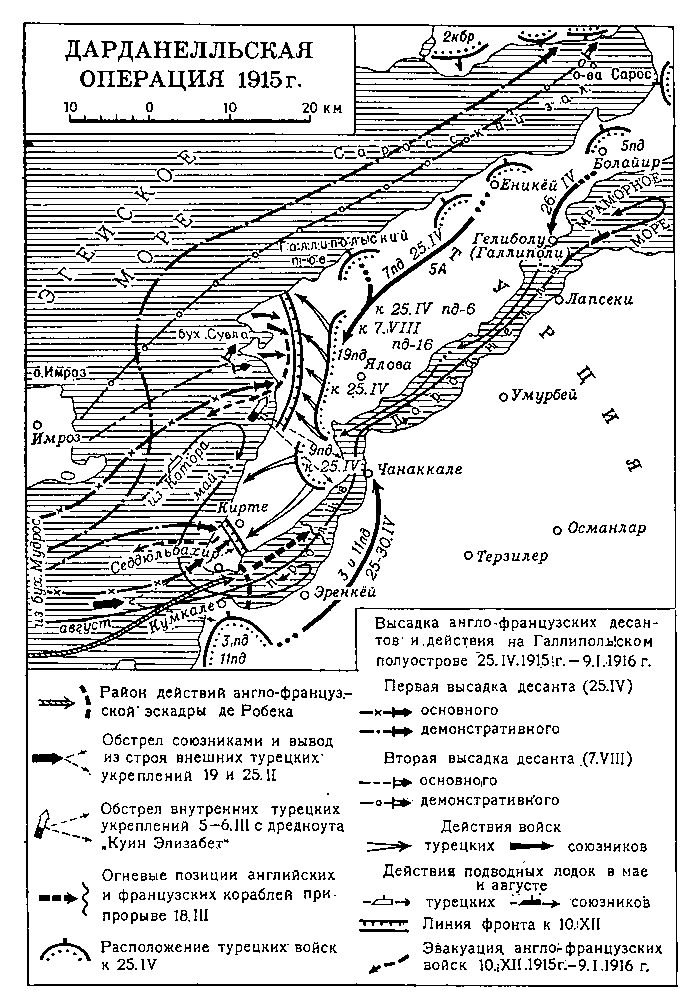
Sources:
Patients A. G. Sea battles of the First World War: on the ocean expanses. M., 2002.
Basil Liddell Garth. 1914. The truth about the First World War. M., 2009.
John Keegan. World War I. M., 2004.
Zalessky K.A. Who was who in the First World War. M., 2003.
The history of the First World War 1914-1918. Ed. I. I. Rostunova. M., 1975. // http://militera.lib.ru/h/ww1/index.html.
A.K. Kolenkovsky. The Dardanelles operation. ML.:, 1930. // http://militera.lib.ru/h/kolenkovsky/index.html.
Moorhead A. Fighting for the Dardanelles. The decisive battle between Turkey and the Entente. M., 2004. // http://militera.lib.ru/h/moorehead_a/index.html.
Petrosyan Yu. Ottoman Empire. M., 2013.
- Alexander Samsonov
- 1915 Campaign
Military plans of the Entente and the Central Powers for 1915 year
Death of the 20 Russian Corps
"Rubber War" in the Carpathians
Battle for Prasnysh
Italian "jackal" enters the war
Battle of the Isonzo
Second Battle of the Isonzo
Germany turns east
Bosphorus bait for Russia
Gorlitsky breakthrough
The defeat of the 3 Army Radko-Dmitriev. The death of the 48 "Steel" division of General Kornilov
Departure of Russian armies from Galicia. Loss of Przemysl and Lviv
The great retreat of the Russian army
The fall of Warsaw
Fall of the Newgeorg Fortress
The great retreat of the Russian army was the harbinger of the 1917 disaster of the year.
1915 Campaign of the Year on the Caucasus Front
Solution of the “Christian Question” in Turkey during the First World War
Battle for van
Alashkert operation
Hamadan operation
Sventsian breakthrough
Completion of the 1915 campaign of the year on the Russian front: the battle for Lutsk and Chartoryisk. Operation on the river. Strypa
As England and France set up Russia under the German ram
Dardanelles operation
Dardanelles: defeat at sea
Dardanelles trap
"It was the devil's feast ..." Sturm Gallipoli
Battle of Critia. New losses of the allied fleet
Landing operation in the gulf of Suvla
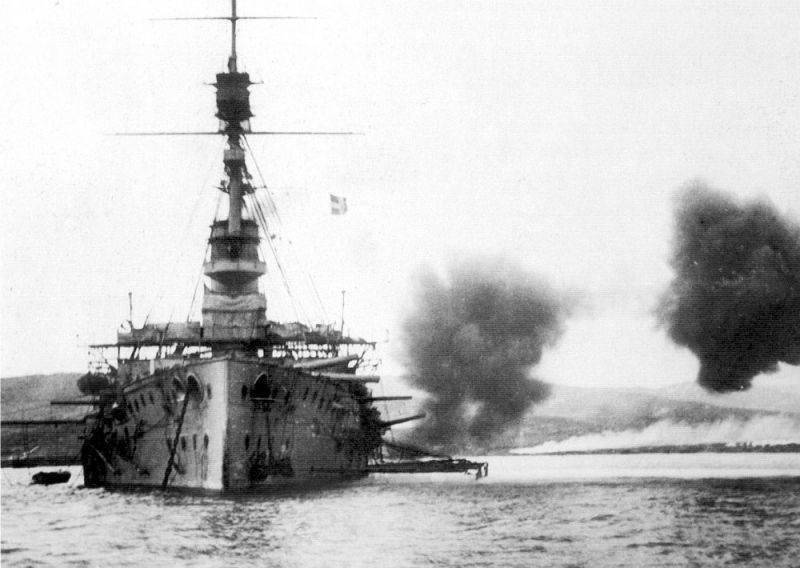
Information